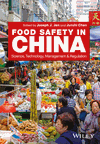Food-borne Diseases and Surveillance
Summary
Food-borne disease is defined as infectious or poisoning diseases arising from pathogenic factors in food entering into the human body. This chapter reviews and evaluates the past and current food-borne surveillance systems in China, and discusses the directions for future development. The year 2010 is used as a cut-off between the past and current period, when China started to establish a new national food-borne disease surveillance system. An outbreak of severe acute respiratory syndrome (SARS) in 2003 served as the major transformative event in public health in China. Before the Food Safety Law was formulated in 2009, the management of food-borne diseases in China focused on the control of mass food-poisoning incidents and food-borne communicable diseases transmitted human-to-human. The year 2008, when the melamine in baby formula event occurred, was a significant "watershed" for food-borne disease surveillance in China.



